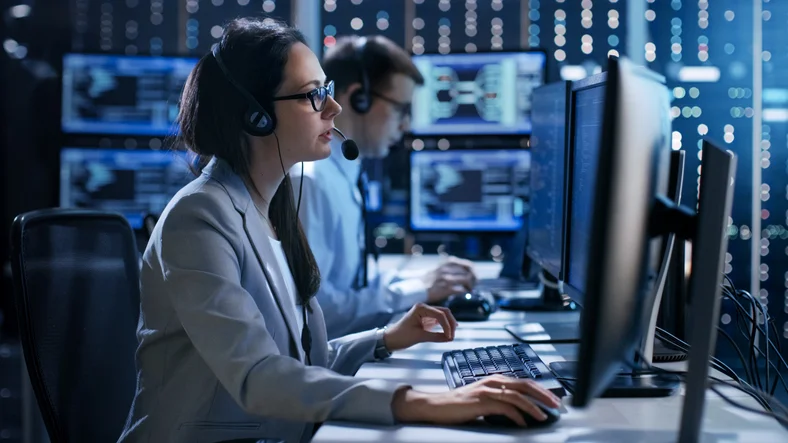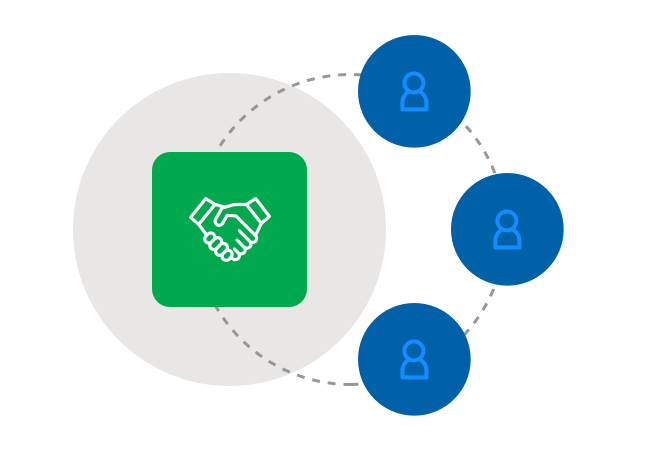From Cybersecurity to Physical Actions: Strengthening Business Security in an Altering World
In today's rapidly progressing electronic landscape, the value of business safety can not be overstated. As cyber dangers end up being significantly innovative and prevalent, companies must go past typical cybersecurity steps to secure their possessions and procedures - corporate security. This is where the combination of physical safety procedures comes to be vital. By combining the strengths of both cybersecurity and physical safety, companies can create a detailed defense approach that resolves the diverse array of hazards they deal with. In this discussion, we will certainly check out the altering threat landscape, the requirement to incorporate cybersecurity and physical security, the execution of multi-factor verification procedures, the significance of employee awareness and training, and the adjustment of safety procedures for remote workforces. By analyzing these key locations, we will acquire beneficial understandings into how organizations can strengthen their business safety and security in an ever-changing globe.
Recognizing the Transforming Threat Landscape
The evolving nature of the modern-day globe necessitates a detailed understanding of the altering threat landscape for reliable corporate protection. In today's interconnected and electronic age, hazards to company safety have actually become a lot more complex and advanced. As technology advances and companies come to be increasingly dependent on digital facilities, the capacity for cyberattacks, data breaches, and various other security breaches has dramatically boosted. It is important for organizations to remain notified and adjust their security measures to resolve these evolving dangers.
One trick aspect of understanding the altering threat landscape is identifying the various kinds of threats that companies face. Furthermore, physical threats such as burglary, criminal damage, and corporate reconnaissance remain widespread issues for organizations.
Tracking and analyzing the threat landscape is crucial in order to recognize prospective risks and vulnerabilities. This involves staying upgraded on the most recent cybersecurity patterns, evaluating threat knowledge reports, and carrying out regular threat analyses. By understanding the altering threat landscape, companies can proactively carry out proper protection actions to reduce dangers and shield their possessions, reputation, and stakeholders.
Integrating Cybersecurity and Physical Safety
Integrating cybersecurity and physical protection is critical for comprehensive corporate defense in today's interconnected and electronic landscape. As organizations significantly count on technology and interconnected systems, the borders between physical and cyber risks are coming to be obscured. To successfully guard against these threats, an alternative method that combines both cybersecurity and physical security actions is necessary.
Cybersecurity focuses on shielding digital possessions, such as networks, information, and systems, from unapproved access, interruption, and theft. Physical security, on the various other hand, includes procedures to safeguard physical assets, people, and centers from risks and susceptabilities. By incorporating these two domains, organizations can resolve susceptabilities and risks from both physical and electronic angles, therefore improving their overall protection posture.
The combination of these 2 techniques permits for a more detailed understanding of protection risks and enables a unified action to incidents. For instance, physical access controls can be improved by integrating them with cybersecurity methods, such as two-factor verification or biometric identification. Likewise, cybersecurity actions can be complemented by physical security steps, such as monitoring cams, alarms, and secure accessibility factors.

Carrying Out Multi-Factor Verification Procedures
As companies increasingly prioritize extensive safety and security steps, one effective approach is the implementation of multi-factor verification measures. Multi-factor authentication (MFA) is a security method that requires users to give multiple kinds of recognition to access a system or application. This method adds an added layer of security by combining something the individual understands, such as a password, with something they have, like a protection or a fingerprint token.
By carrying out MFA, companies can dramatically boost their security stance - corporate security. Conventional password-based verification has its constraints, as passwords can be conveniently jeopardized or failed to remember. MFA mitigates these dangers by including an additional authentication element, making it more challenging for unauthorized people to get to sensitive info
There are several sorts of multi-factor authentication approaches readily available, including biometric authentication, SMS-based confirmation codes, and hardware symbols. Organizations require to assess their specific requirements and select one of the most proper MFA remedy for their requirements.
However, the execution of MFA ought to be thoroughly planned and carried out. It is important to strike an equilibrium between safety and use to stop individual frustration and resistance. Organizations needs to likewise think about possible compatibility problems and give ample training and assistance to ensure a smooth shift.
Enhancing Staff Member Awareness and Training
To enhance corporate safety and security, Look At This organizations should focus on improving staff member recognition and training. In today's swiftly progressing threat landscape, employees play a critical role in safeguarding a company's delicate details and possessions. Unfortunately, numerous safety and security violations take place as a result of human error or absence of recognition. Consequently, organizations need to purchase thorough training programs to inform their staff members regarding prospective threats and the ideal practices for mitigating them.
Efficient employee recognition and training programs must cover a vast array of subjects, including data protection, phishing strikes, social engineering, password hygiene, and physical safety procedures. These programs must be tailored to the particular requirements and obligations of different employee roles within the organization. Routine training simulations, workshops, and sessions can my site help staff members establish the necessary skills and knowledge to react and identify to protection hazards properly.
Moreover, organizations should urge a culture of safety awareness and supply ongoing updates and suggestions to keep staff members notified concerning the most recent threats and reduction techniques. This can be done through inner interaction networks, such as newsletters, intranet websites, and e-mail projects. By cultivating a security-conscious workforce, organizations can considerably minimize the possibility of safety and security occurrences and shield their useful properties from unauthorized access or concession.

Adapting Safety Procedures for Remote Labor Force
Adapting corporate protection steps to suit a remote labor force is crucial in making sure the defense of sensitive details and possessions (corporate security). With the increasing fad of remote work, companies should execute suitable safety steps to minimize the threats connected with this new way of functioning
One crucial facet of adjusting safety actions for remote job is establishing safe and secure interaction networks. Encrypted messaging systems and virtual exclusive networks (VPNs) can assist secure sensitive details and avoid unapproved accessibility. Furthermore, companies ought to implement the usage of solid passwords and multi-factor verification to improve the safety of remote gain access to.
One more crucial consideration is the application of safe remote gain access to options. This involves providing employees with protected access to corporate image source resources and data with online desktop infrastructure (VDI), remote desktop procedures (RDP), or cloud-based options. These technologies guarantee that delicate details remains safeguarded while enabling staff members to perform their roles effectively.

Last but not least, comprehensive safety and security recognition training is critical for remote workers. Educating sessions must cover finest methods for firmly accessing and taking care of sensitive information, recognizing and reporting phishing attempts, and keeping the general cybersecurity health.
Final Thought
In verdict, as the hazard landscape proceeds to evolve, it is crucial for companies to reinforce their safety and security measures both in the cyber and physical domains. Incorporating cybersecurity and physical protection, implementing multi-factor verification procedures, and improving worker understanding and training are crucial steps towards accomplishing robust corporate protection.
In this discussion, we will certainly check out the changing threat landscape, the need to incorporate cybersecurity and physical safety, the implementation of multi-factor verification actions, the relevance of employee understanding and training, and the adjustment of safety procedures for remote workforces. Cybersecurity actions can be complemented by physical safety steps, such as surveillance electronic cameras, alarms, and secure gain access to points.
As companies progressively focus on thorough security measures, one reliable method is the application of multi-factor authentication steps.In final thought, as the risk landscape continues to evolve, it is essential for organizations to strengthen their security measures both in the cyber and physical domains. Incorporating cybersecurity and physical safety, executing multi-factor authentication steps, and improving staff member understanding and training are essential actions in the direction of attaining durable business safety.